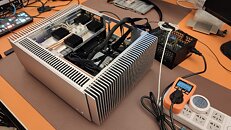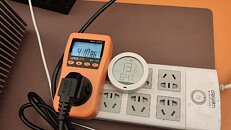The NVIDIA RTX 3080 is a 320 W TDP card making it impractical for conventional contained passive cooling solutions. Commercial passively cooled cards such as the GTX 1050 Ti, and GTX 1650 Ti all come in with a TDP of less than 100 W and even then require large heatsinks. Mical Wong, the founder of Turemetal a company specializing in passively cooled computers has managed to create a passively cooled PC with an RTX 3080 and Ryzen 5 5600X. The PC features the companies flagship Turemetal UP10 case.
The system booted but was unusable at stock settings with the RTX 3080 quickly overwhelming the cooling system when running at 100%. The GPU reached 87 degrees Celsius within minutes when running Furmark with a total system power draw of 410 W. The Turemetal UP10 is only officially rated for 300 W system cooling so the fact that this worked at all is quite impressive. With some CPU, and GPU configuration and power limiting, it would appear feasible to create such a system assuming you could afford it.




View at TechPowerUp Main Site
The system booted but was unusable at stock settings with the RTX 3080 quickly overwhelming the cooling system when running at 100%. The GPU reached 87 degrees Celsius within minutes when running Furmark with a total system power draw of 410 W. The Turemetal UP10 is only officially rated for 300 W system cooling so the fact that this worked at all is quite impressive. With some CPU, and GPU configuration and power limiting, it would appear feasible to create such a system assuming you could afford it.




View at TechPowerUp Main Site







